I read somewhere recently – “Jaipur is the finest jewellery ever created on earth, where king was the jeweller and bricks his gems”, and how true!

One always falls short of words while describing the generous charm that the city has to offer to every first timer and sometimes, even the locals. The culture, traditions, art, architecture, jewellery and textiles of Jaipur have always charmed the tourists. It is one city that, even after modernisation, still holds to its roots and values.
I have a small ‘online tradition’ before I begin writing a new blog. I type in the destination (in this case) ‘Jaipur…’ on Wikipedia to see how my friend, Wiki auto fills my search. What follows is mostly a twinkling giggle and a subsequent state of utter dismay. Sharing a few examples of what I found online below. Relax, it is not a rant. Just a perspective.

Now first of all, never go for the whole ‘1-day Itinerary’ tourism, otherwise you will never be able to experience a place to its fullest. Most culturally vibrant places with a rich cultural history have now been reduced to mere photoshoot destinations or as the ‘gen next’ would call it – ‘Instagrammable Places’, and that is a shame. In today’s digitally saturated world, Social Media may be a gigantic phenomenon but trust me, the short smile you donned in that hasty selfie you took at the Hawa Mahal will not be as heartening as the smile that will brighten your face when you hear that the Hawa Mahal, was in fact, erected by the then Maharaja, Sawai Pratap Singh, so that the women of the royal court could marvel at the beauty of the city from behind closed doors. And, still, 220 years later, the view is nothing short of impressive.
It is fascinating to hear the Rajasthani folk tales and escape into their stories of the glorious past of Jaipur. These stories come alive in the forts and palaces of the city where the royal kindred once resided. The majestic forts and havelis, lost jewelled temples, the sun-drenched landscapes, and the rich cultural heritage, have made Jaipur India’s favourite tourist destination.
We cannot even begin talking about Jaipur without hyphening it saying, ‘The Pink City’. Jaipur is a magical city displaying a vibrant array of colours amid its rosy ancient palaces. A city painted in romantic pink hues might look outlandish in most parts of the world, but here on the edge of the Thar, far away from the west both geographically and philosophically, Jaipur feels eternally poised. The pink colour has its own history. In the year 1876, the British Royalty were to visit India as a part of their World Tour. Since pink denotes the colour of hospitality, Maharaja Ram Singh of Jaipur painted the entire city pink in colour to welcome the guests. Since then, this tradition has been sincerely followed by the locals of the city.
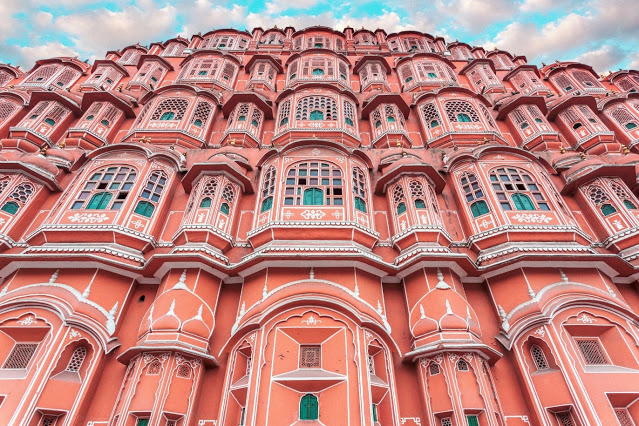
This enthralling pink city has almost become synonymous with the signature landmark ‘honeycomb’ facade that rises upto five stories high ornamented with a total of 953 windows nestled into rounded latticed balconies, exemplifying the strong yet delicate Rajput Architecture in all its glory. A soft beam of sunlight can sometimes, be seen gleaming shyly through one of the windows at sunset and that sight is worth the wait. The ‘Hawa Mahal’ literally translates into the term the ‘Wind Palace’.
This romantic pink sandstone fortress cascading over the streets of Jaipur with a heavily intricate facade is possibly Jaipur’s most photographed building. Wind used to flow vigorously through the shutters, thus giving the palace its name. This structure displays relics, artefacts, statues, and other historical memorabilia that commemorate Rajasthan’s royal history. Also, make sure you do not miss to catch a glimpse of this Rajput beauty at sundown. Trust me, you will not be disappointed.

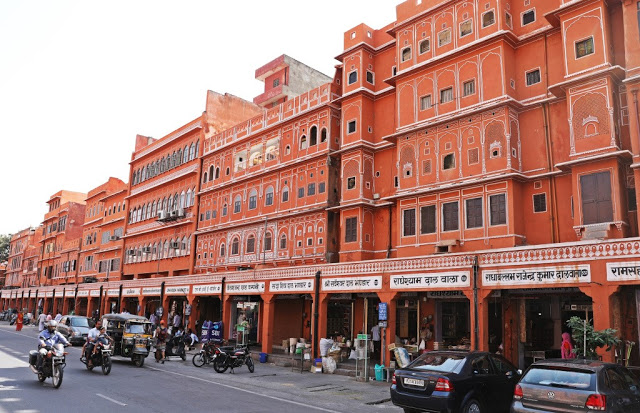
Jaipur is home to colourful, chaotic streets that double up as a treasure trove of culture, heritage and tradition. These streets have been set in the heart of the city in a traditional grid-iron plan with 2 main chowks – The Badi and Choti Chaupar, acting as major landmarks to catch up with that friend of yours who always gets lost in a crowded marketplace. Now I am pretty sure you must have assumed that the word Chaupar would naturally mean ‘Chowk’ in the local lingo however, that is not true. Chaupar is actually a cross and circle board game very similar to Pachisi, played in India. It is believed that both games were created around the 4th century. The traditionally embroidered Chaupar board resembles a ‘chowk’ and therefore, the term Chaupar was coined to label the prominent landmark.


As the epicentre of the India’s magnificent historical structures, Jaipur houses the historic architectural wonders and natural beauty of greater Rajasthan. A stunning array of fortresses, palaces, temples, and other fortifications, the majority of which were built in the 18th century, line the hilltops to protect the area’s many villages as well as generations of royalty.

From the city’s magnificent Amer Fort that sits atop a hill overlooking the Maota Lake to its remarkable Jal Mahal (Water Palace) that appears to magically float on the Man Sagar Lake, this Rajput city with its exotic cityscape, washed in a soft, glowing shade of rosy blush that deepens as the sun sets each evening.
Shooting in these breathtaking forts and palaces are every photographer’s dream but recently they have happened to emerge as a Bollywood favourite! Blockbusters like Bajirao Mastani and Jodha Akbar have all been filmed inside the four walls of these ancient fortresses and the raw beauty of the Rajasthani countryside adds to the final flourish.
Apart from these historic monuments, Jaipur is also home to another stand in building designed by one of India’s renowned architect and urban planner Mr. Charles Correa. For all you young architects and non-architects out there – students or professionals, make sure you take out some time off your itineraries to visit the Jawahar Kala Kendra while in Jaipur. If there is one place in Jaipur which is closely associated with art and artists , it has to be Jawahar Kala Kendra (JKK). The natives possess a deep affinity with JKK because it provides them with a space to explore their creative side. It was launched by the Rajasthan government to showcase the rich, artistic heritage and provide impetus to cultural and spiritual values.
JKK portrays a mesmerising interplay of light, shadow and colours. Charles Correa designed the building in such a way that sunlight finds its way into the structure through the roof rather than the walls.

A contemporary building is designed on the belief of the Cosmos and Navagraha with one of the squares moved aside, to replicate the original plan of Jaipur.
The design of Jawahar Kala Kendra comes from the city itself, which was based on the nine squares each representing nine planets. The ruler who built this city was obsessed with the sky, so on one side we used the oldest myths of the sky which is the ‘Navgrah’ – the nine planets and then we also combined the oldest with the newest myth which is science, through astronomical instruments.
Charles Correa
Each square of this plan embodies the characteristics of the planet it represents. The central square lies in the House of Sun that is represented by the Amphitheatre. In a way, it represents the courtyard of the local house – Havelis. Another inspiration for the design of this space comes from the Stepwells of this region. The Theatre finds space in the House of Venus, representing Art and the Library lies in the House of Mercury that represents Knowledge. The Restaurant is in the House of Moon for which a provision of a total of 28 tables has been made.
Charles Correa felt architecture is a sculpture but used by human beings, so the doors and windows are places for light and air. The openings do not spoil the sculpture, instead they complete it.
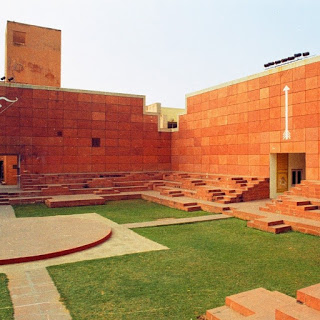
There is so much more to this city than just architecture. Jaipur is packed with fascinating festivals, richly decorated elephants casually roaming about the city, enchanting cultural flair and a labyrinth of colourful streets at every turn. The bazaars of Jaipur are every shopaholics paradise. Once you are onto the streets, your senses will be completely assaulted with colours, smells and noise. You will see more than a million saris, but never once will you see the same pattern repeat twice.
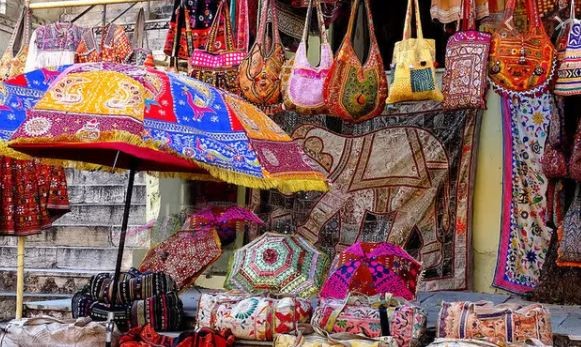
For the quintessential Jaipur street-shopping experience, head to Tripolia Bazar where you can shop for textiles and trinkets. You will see the artisans at work in the by lanes. If you are a jewellery fanatic, make your way to the Johari Bazar to begin your street haul. The Nehru and Sireh Deori Bazaar are well known for their vibrant and splashy juttis. Sitting opposite to the famous Hawa Mahal, this bazaar is perfect for some brisk window shopping; and yes, while you are there, do not forget to bargain. We all enjoy a little bargain banter now, don’t we? And just in case the heat is getting to you, which it will, make a quick stop by the side of the road to watch an old man crush sugar canes and there is nothing like enjoying a glass of cold and fresh sugarcane juice on a hot sunny day.
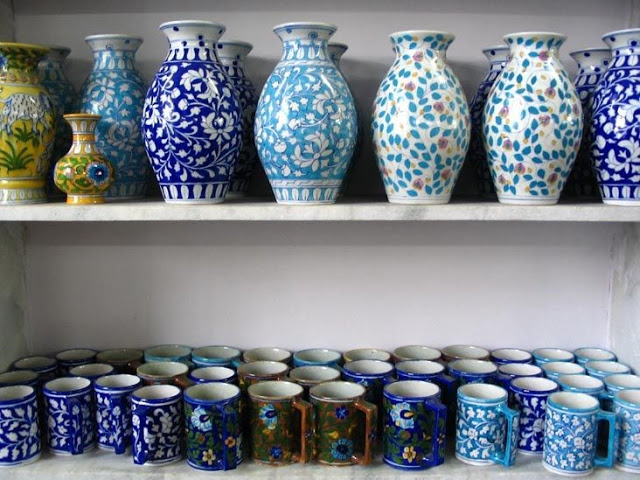
Jaipur is the Indian flag-bearer for the traditional craft of Blue Pottery. Home to Jaipur’s original blue pottery, Kripal Kumbh runs out of the home of the famous ceramist, the late Kripal Singh Shekhawat. It is, however, a lesser known fact that today blue pottery is an industry that provides livelihood to many artists and sculptors in Jaipur. So, make sure you make at least one purchase of this beautiful art form from a local store and encourage and support these passionate artists.
Now coming to my favourite part – Food! One of the most delightful aspects of a visit to the ‘pink city’ is the culinary delights of Rajasthan, the main cuisine of Jaipur. The Rajput Royalty had an array of impressive mouth-watering delights, closely guarded by the royal chefs. Some of these recipes have been passed on through generations. This city of royalty has served food to the Kings and Queens of the past. Hence, the city never fails to serve the best delicacies to its residents and tourists. If you are planning a trip to Jaipur, leave your worries aside as the city has myriad number of restaurants.
Typical dishes include Dal Baati Churma, Missi Roti. If you have a sweet tooth like me, then don’t forget to taste the Feeni, Gajak, Chauguni ke Laddu and Moong Thal, and my favourite Rajasthani sweet, Ghevar.

People from all walks of life, seemingly from a mix of centuries, weave through the boulevards and bazaars amid a cavalcade of rickshaws and motorbikes, three-wheeled trucks and elephants, all buzzing through this charming city with a vibrant exuberance. On closing all I can say is:
‘Jaipur is a blushing bride draped in pink, dancing in our dreams while the elephant’s trumpet echoes and the peacocks sing’
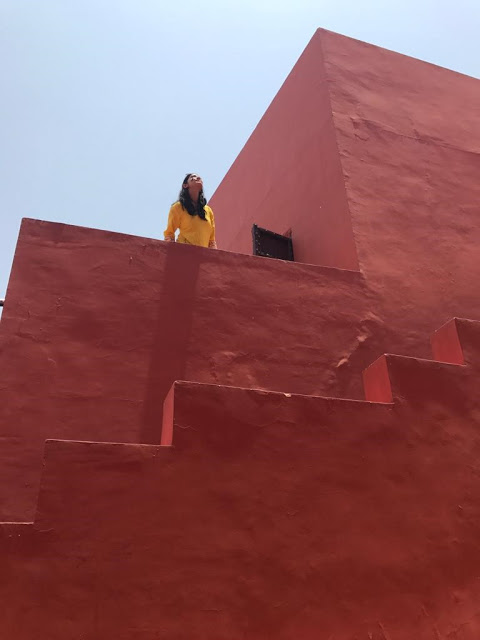

Leave a comment